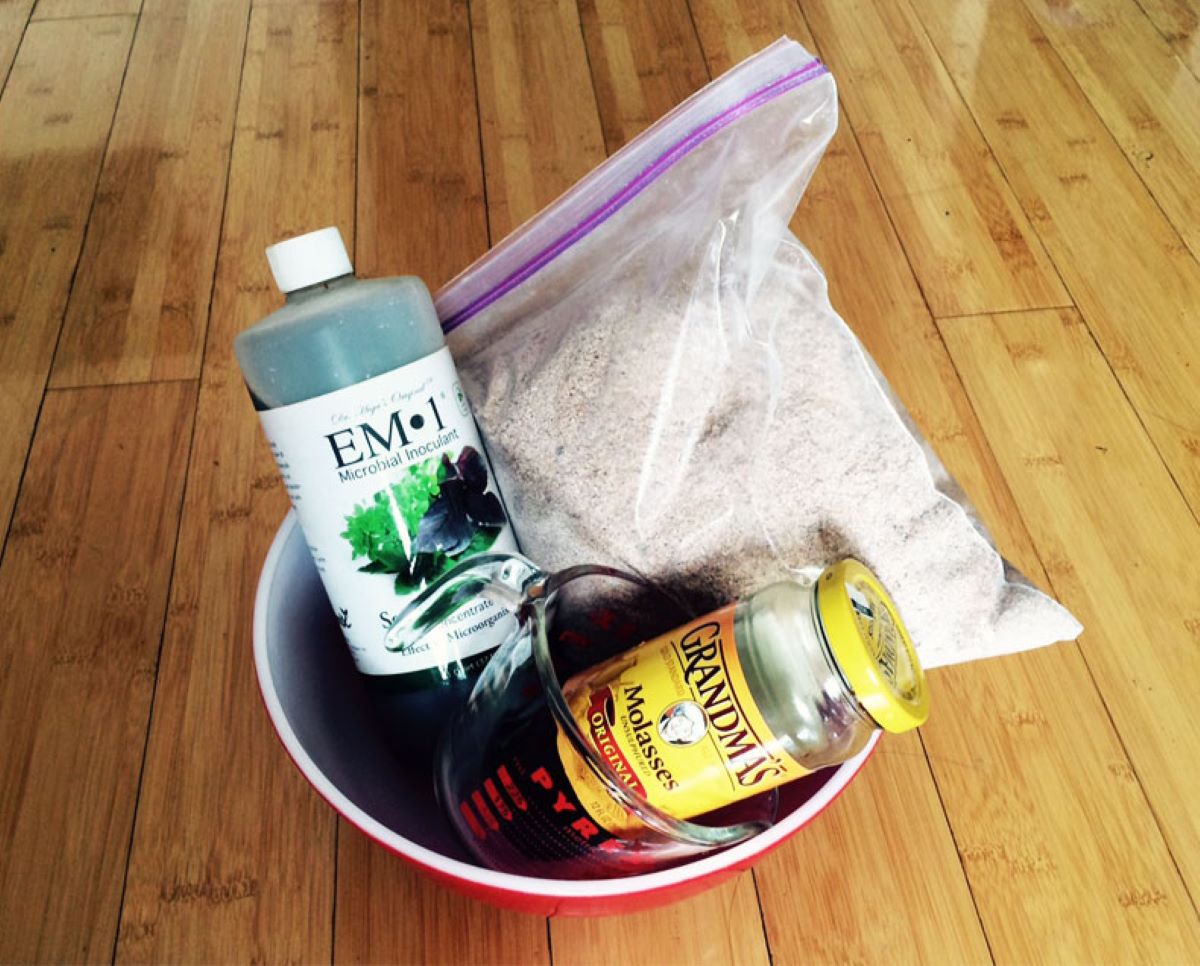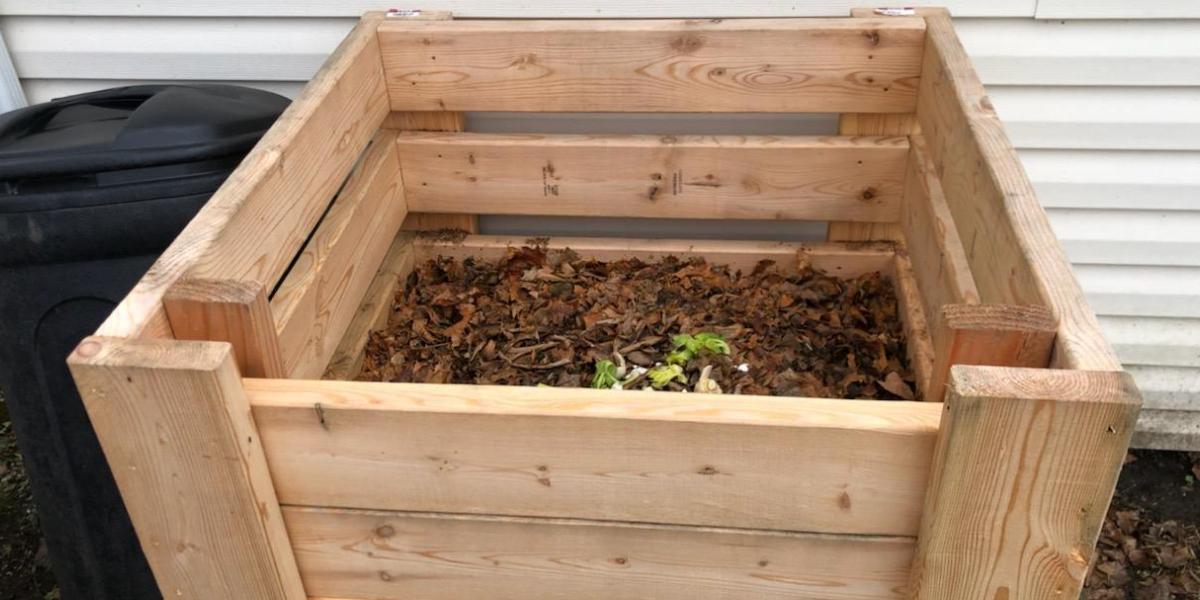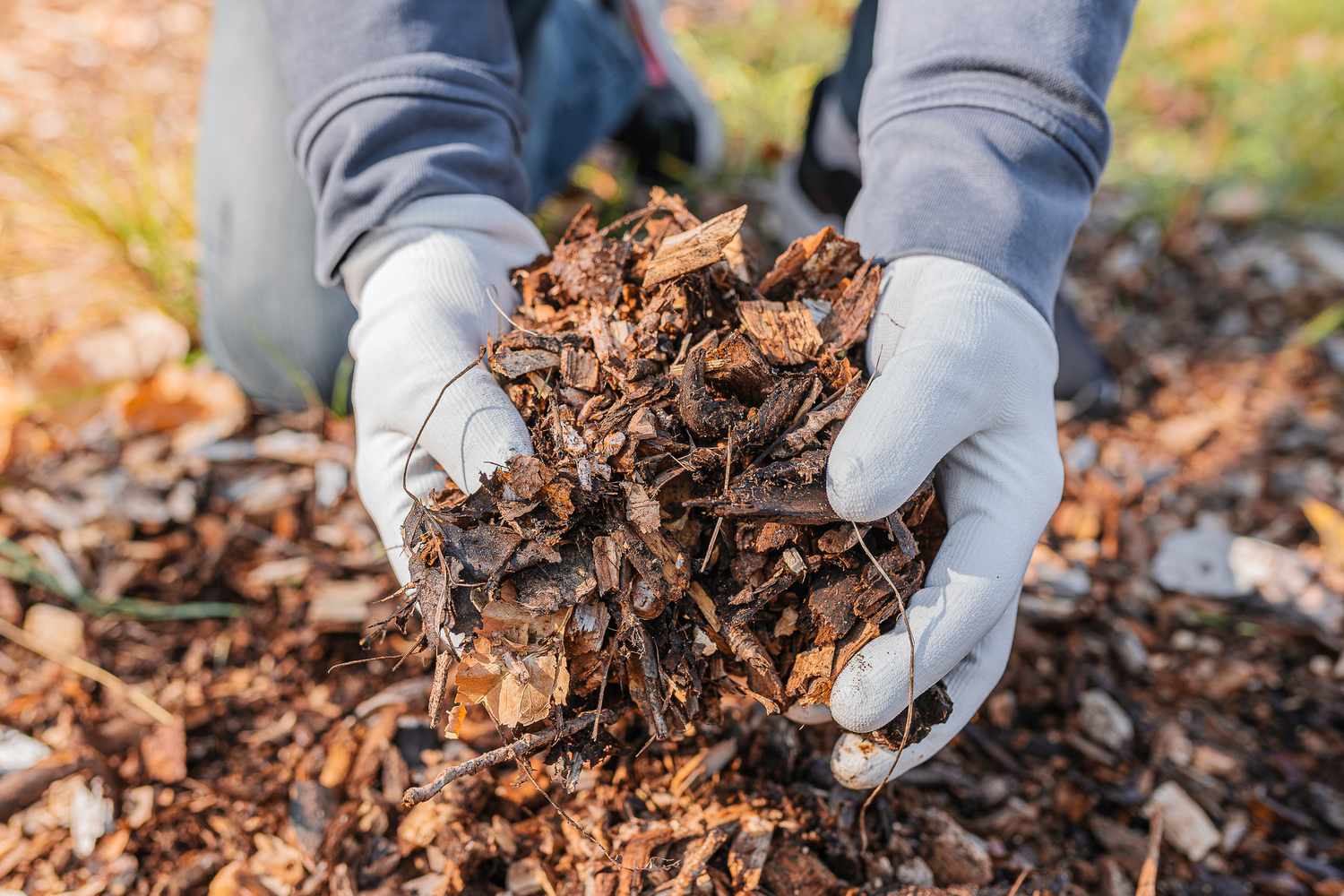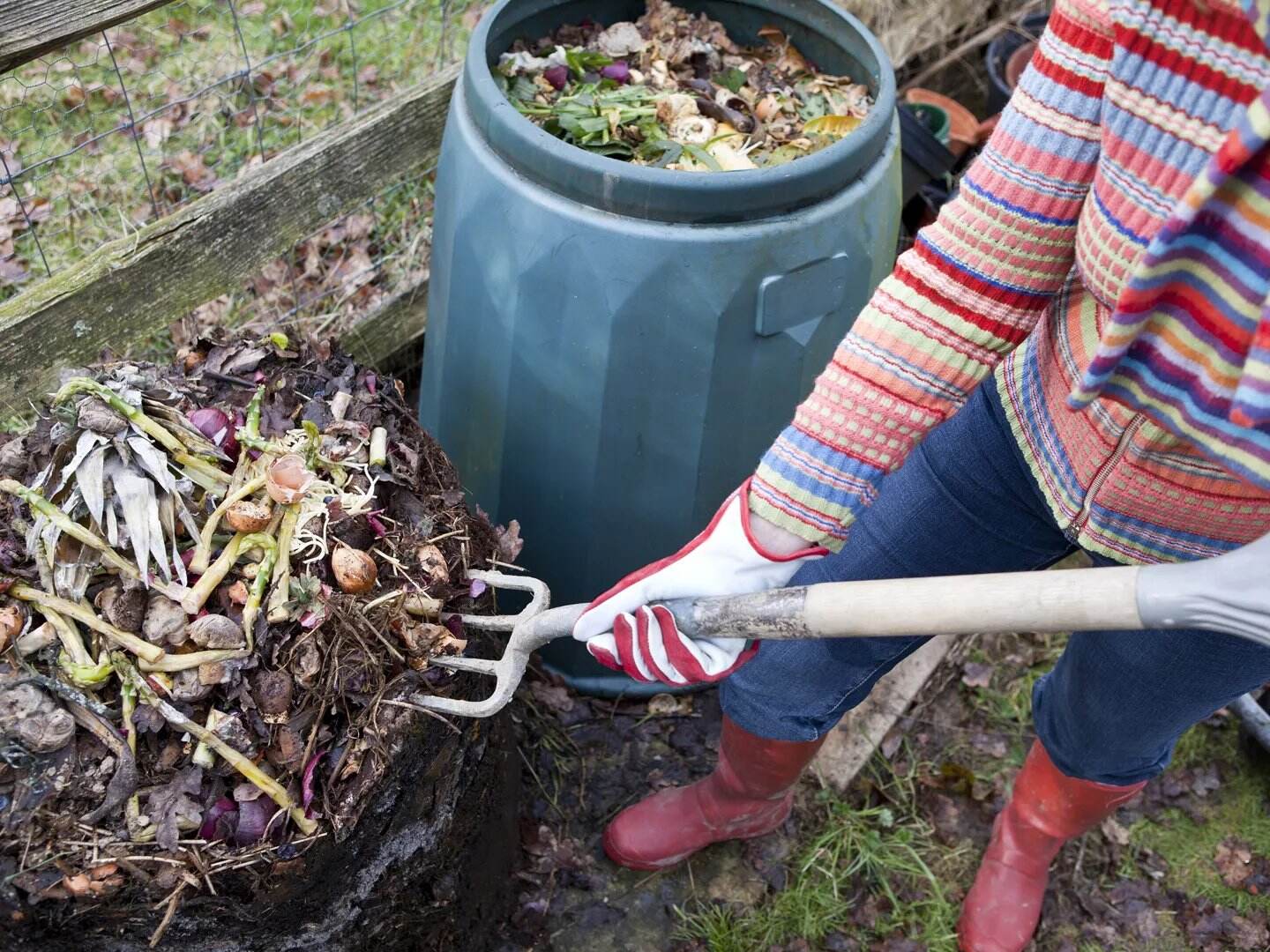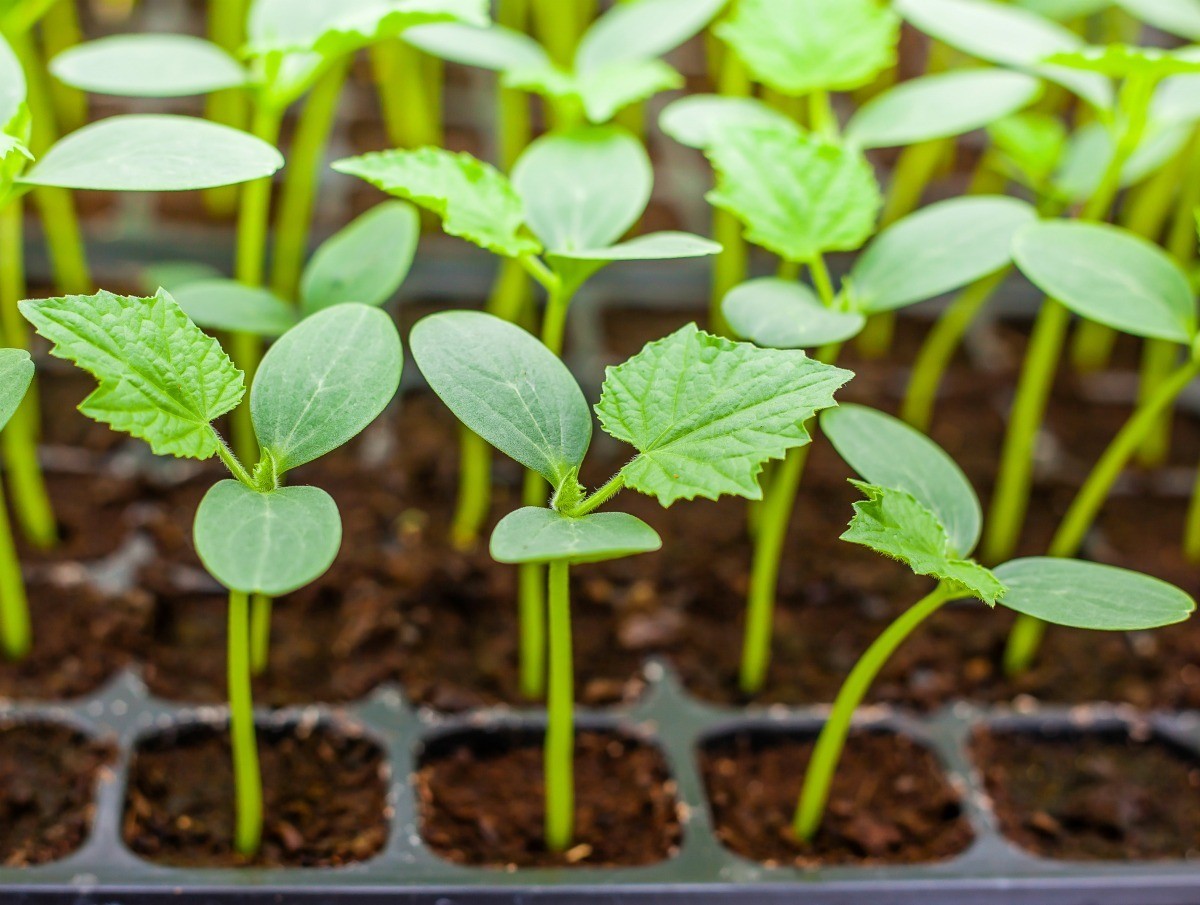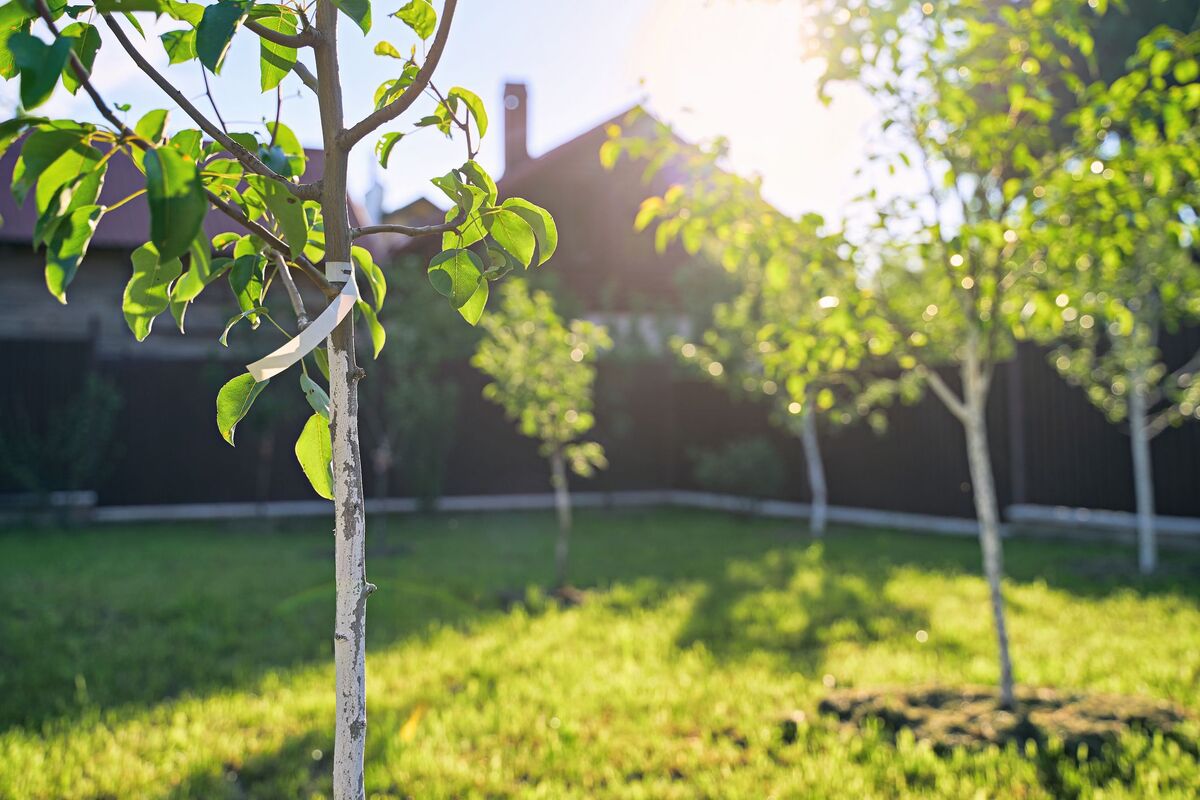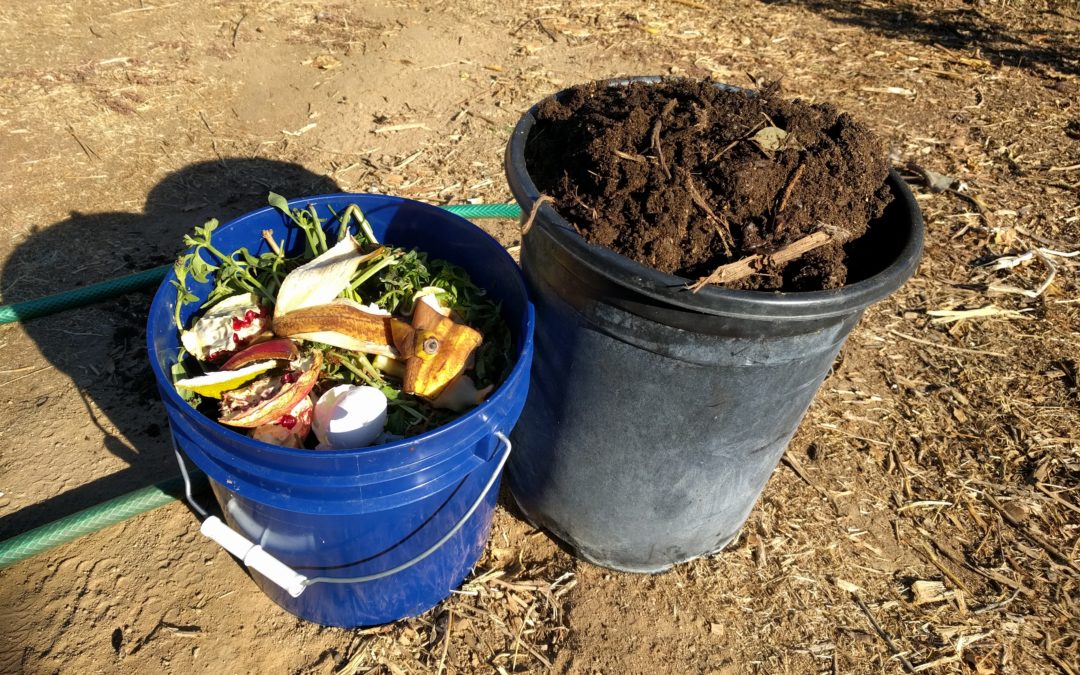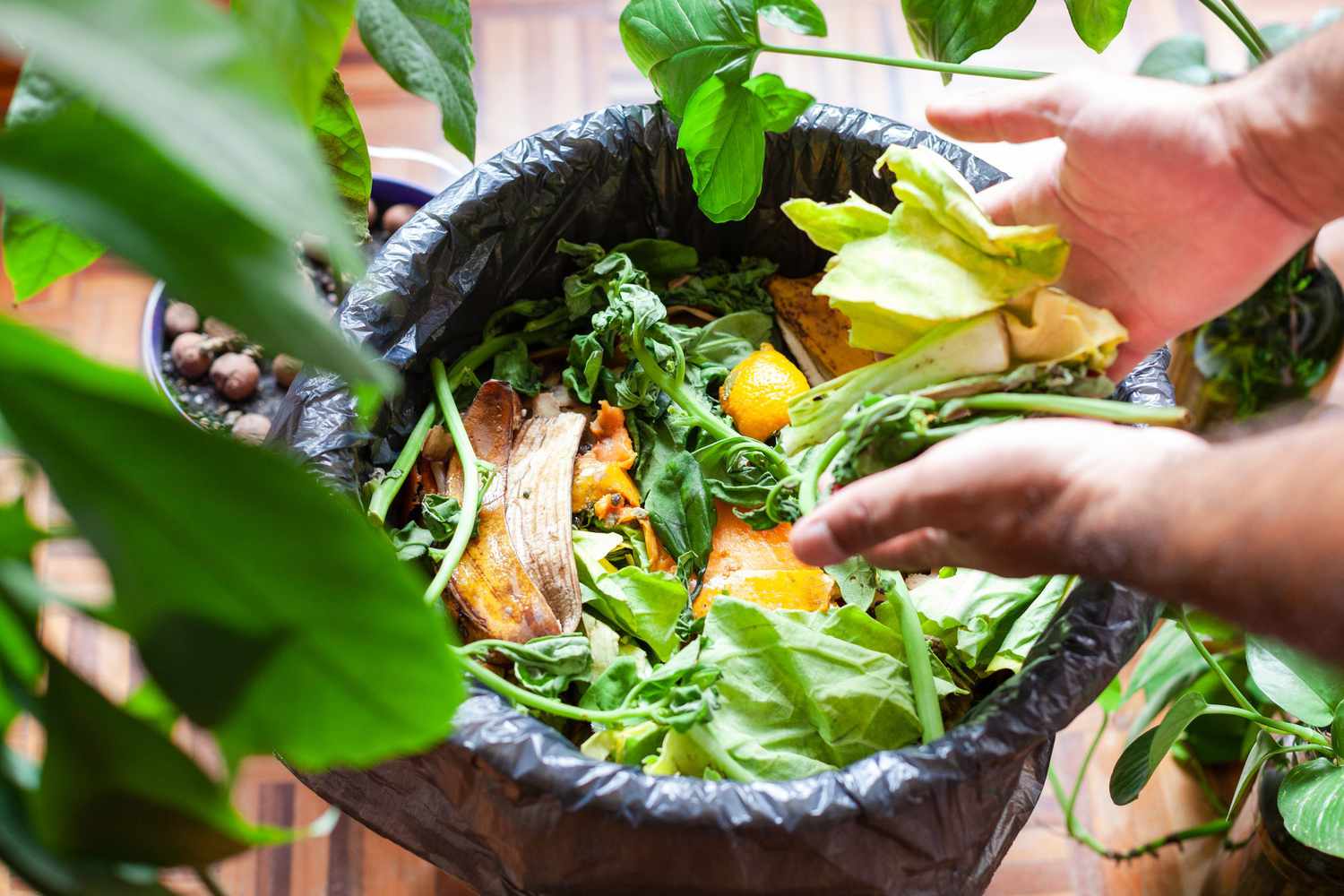Home>Gardening Techniques>DIY Projects>How To Make Compost Break Down Faster
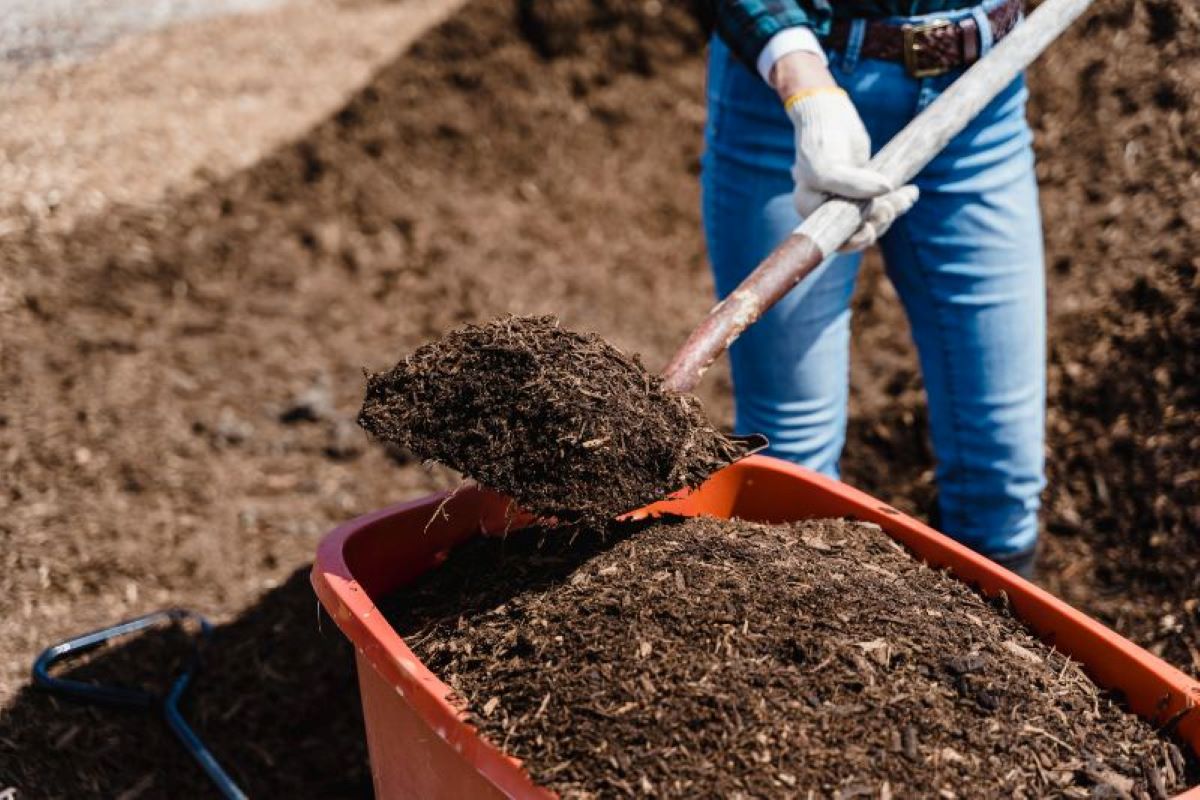

DIY Projects
How To Make Compost Break Down Faster
Modified: January 22, 2024
Discover effective DIY projects to accelerate the breakdown of compost and transform your garden into a thriving oasis. Learn how to make compost break down faster with simple yet powerful techniques.
(Many of the links in this article redirect to a specific reviewed product. Your purchase of these products through affiliate links helps to generate commission for Chicagolandgardening.com, at no extra cost. Learn more)
Table of Contents
Introduction
Welcome to the world of DIY projects! If you’re someone who loves getting your hands dirty and creating something amazing from scratch, then you’ve come to the right place. DIY projects can range from simple home improvements to complex woodworking or crafting endeavors. The satisfaction that comes with doing it yourself is unparalleled, as you get to learn new skills, save money, and create something unique.
One popular aspect of the DIY world is composting. Composting is the process of breaking down organic materials to create nutrient-rich soil. It’s not only a great way to reduce waste going to landfills, but it’s also a way to provide your garden with natural fertilizer that will help your plants thrive.
In this comprehensive guide, we’ll dive deep into the world of composting and explore how to make compost break down faster. We’ll cover the basics of composting, including choosing the right materials, establishing the optimal carbon-to-nitrogen ratio, and using proper techniques for layering, moisture, and aeration. We’ll also discuss the importance of temperature, turning, and the role of compost activators in speeding up the decomposition process.
Whether you’re a seasoned composter looking for ways to improve your composting process or a beginner looking to start your first compost pile, this guide has got you covered. Get ready to harness the power of decomposition and turn your kitchen scraps, yard waste, and other organic materials into black gold for your garden.
So let’s get started on this journey to making compost break down faster and unlock the secrets of nature’s recycling system. By the end of this guide, you’ll have all the knowledge you need to maximize the efficiency and productivity of your compost pile. Let’s dive in!
Understanding Compost Breakdown
Before we delve into the techniques to speed up compost breakdown, it’s important to understand the natural process of decomposition. Compost breakdown is a complex biological process that involves the breakdown of organic matter by microorganisms and macroorganisms, such as bacteria, fungi, worms, and insects.
When you create a compost pile, you are providing an ideal environment for these organisms to thrive and carry out their work. The organic materials in your compost pile serve as food for these organisms, and as they break down the materials, they release carbon dioxide, heat, and nutrients. Over time, the organic matter is transformed into a stable, nutrient-rich substance known as compost.
Several factors impact the speed at which compost breaks down. The balance of carbon and nitrogen, also known as the carbon-to-nitrogen ratio, is crucial. Microorganisms need a balanced diet of carbon and nitrogen to carry out their work efficiently. A ratio of approximately 30 parts carbon to 1 part nitrogen is considered optimal for compost breakdown.
Moisture and aeration are also important factors in compost breakdown. Microorganisms need a moist environment to survive and perform their functions. Properly aerating the compost pile ensures that oxygen reaches the microorganisms, allowing them to thrive and accelerate decomposition.
Temperature plays a significant role in compost breakdown as well. The activity of microorganisms increases as the temperature rises. A compost pile that reaches the optimal temperature range of 130-160°F (55-70°C) will experience faster decomposition. This temperature range also helps to kill weed seeds and pathogens that may be present in the organic materials.
Additionally, turning the compost pile aids in speeding up the breakdown process. Turning the pile helps to mix the materials, ensuring that oxygen and moisture are evenly distributed. This process helps to create a homogenous environment for the microorganisms and accelerates decomposition.
By understanding the intricacies of compost breakdown, you can make informed decisions and implement techniques that will optimize the process. In the next sections, we’ll explore various methods and strategies that will help you make compost break down faster, allowing you to enjoy nutrient-rich soil for your gardening endeavors.
Composting Basics
Composting is a natural and sustainable way to recycle organic materials and create nutrient-rich soil. By harnessing the power of decomposition, you can transform kitchen scraps, yard waste, and other organic matter into a valuable resource for your garden.
Composting can be done on a small scale, such as in your backyard, or on a larger scale, such as in a community composting facility. No matter the scale, the basic principles of composting remain the same.
First and foremost, it’s essential to select the right location for your compost pile or bin. Choose a spot that is well-drained, receives ample sunlight, and is easily accessible. The size of your compost pile will depend on the amount of organic material you generate and the available space. A pile that is at least 3 feet wide, 3 feet long, and 3 feet high provides enough mass for proper decomposition.
Next, gather the materials for your compost pile. The key to successful composting is achieving the right balance of carbon-rich (brown) and nitrogen-rich (green) materials. Brown materials include dry leaves, straw, shredded paper, and wood chippings, while green materials consist of vegetable scraps, grass clippings, and coffee grounds. Aim for a mix of approximately 2 parts brown materials to 1 part green materials.
It’s important to chop or shred larger materials into smaller pieces. This increases the surface area and speeds up the decomposition process. Shredding or chopping materials also helps to prevent clumping and ensures proper aeration and moisture distribution throughout the pile.
Once you have your materials, it’s time to start layering them in your compost pile. Begin with a layer of twigs or straw at the bottom to aid in aeration and drainage. Alternate layers of brown and green materials, ensuring a balanced mix and even distribution. Aim for a pile that is moist but not waterlogged. If the pile is too dry, add water; if it’s too wet, add more dry materials.
Proper moisture and aeration are crucial for the composting process. The pile should be damp, similar to a wrung-out sponge. Turning the pile every few weeks with a pitchfork or shovel helps to introduce oxygen, mix the materials, and ensure even decomposition. The more frequently you turn the pile, the faster the breakdown process will be.
Throughout the composting process, it’s important to monitor the temperature of the pile. A thermometer inserted into the center of the pile should read between 130-160°F (55-70°C) for optimal decomposition. If the temperature drops, it may indicate a lack of nitrogen or insufficient aeration. Adjust the compost pile accordingly by adding more nitrogen-rich materials and turning it more frequently.
By following these composting basics, you are on your way to creating nutrient-rich compost for your garden. In the next sections, we’ll explore techniques and strategies to speed up the compost breakdown process and optimize your composting experience.
Choosing the Right Materials
When it comes to composting, selecting the right materials is crucial for successful decomposition and nutrient-rich compost. The key is to create a balance between carbon-rich (brown) materials and nitrogen-rich (green) materials.
Brown materials provide carbon, which is necessary for energy and structure in the compost pile. Examples of brown materials include dry leaves, straw, wood chips, shredded newspaper, and cardboard. These materials are typically high in carbon and help create air pockets in the compost pile, allowing for proper aeration.
Green materials, on the other hand, provide nitrogen, which is essential for the growth and reproduction of microorganisms responsible for decomposition. Green materials include vegetable and fruit scraps, grass clippings, coffee grounds, and garden waste. These materials are typically high in nitrogen and help to jumpstart the decomposition process.
It’s important to maintain a proper balance of carbon and nitrogen in your compost pile. Aim for a carbon-to-nitrogen ratio of around 30 parts carbon to 1 part nitrogen. This ratio ensures that the microorganisms have enough energy from carbon to break down the nitrogen-rich materials efficiently.
Some materials, such as kitchen scraps, can have a high nitrogen content. To balance this, add carbon-rich materials like shredded paper or dry leaves to maintain the ideal ratio. On the other hand, if your compost pile is primarily made up of dry leaves or straw, you can add nitrogen-rich materials like grass clippings or vegetable scraps to boost decomposition.
In addition to the carbon-to-nitrogen ratio, it’s essential to avoid certain materials in your compost pile. Avoid adding meat, dairy products, or oily foods, as these can attract pests and slow down the decomposition process. Additionally, avoid composting weeds that have gone to seed, as the heat generated during decomposition may not be enough to kill the seeds, leading to potential weed problems in your garden.
When choosing materials for composting, also consider the size and texture. Chopping or shredding larger materials helps to speed up the decomposition process by increasing the surface area and making it easier for microorganisms to break them down. Shredding or chopping materials also helps to prevent clumping and ensures better aeration and moisture distribution throughout the pile.
By carefully selecting and balancing your compost materials, you can create an optimal environment for decomposition and ensure the production of high-quality compost. In the next sections, we’ll explore other techniques to speed up compost breakdown and maximize the efficiency of your compost pile.
Optimal Carbon-to-Nitrogen Ratio
The carbon-to-nitrogen ratio, often referred to as the C:N ratio, is a crucial factor in composting. This ratio determines the balance between carbon-rich (brown) materials and nitrogen-rich (green) materials in your compost pile.
Aim for a C:N ratio of approximately 30 parts carbon to 1 part nitrogen for optimal composting. This balance ensures that microorganisms have enough energy from carbon to break down the nitrogen-rich materials efficiently. If the ratio is too high in carbon, decomposition may be slow, while too high in nitrogen can lead to a smelly and slimy compost pile.
Brown materials, such as dry leaves, straw, shredded paper, and wood chips, are rich in carbon and provide structure to your compost pile. They help create air pockets, allowing for proper aeration. These materials are typically low in nitrogen, with a C:N ratio ranging from 50:1 to 80:1.
On the other hand, green materials like vegetable scraps, grass clippings, and coffee grounds are high in nitrogen and provide the necessary nutrients for microorganisms to thrive. They kickstart the decomposition process and help break down the carbon-rich materials. Green materials typically have a lower C:N ratio, ranging from 20:1 to 30:1.
To achieve the optimal C:N ratio, it’s important to balance the amount of carbon and nitrogen materials in your compost pile. If your pile is too high in carbon, decomposition may be slow, and the pile may have a dry and airy texture. In this case, you can add nitrogen-rich materials to increase the C:N ratio, such as grass clippings, vegetable scraps, or manure.
If your pile is too high in nitrogen, it may become slimy and emit an unpleasant odor. This indicates an excess of nitrogen-rich materials relative to carbon. To correct this, you can add more carbon-rich materials, such as dry leaves, shredded paper, or straw, to increase the C:N ratio and restore a healthy balance.
Monitoring the C:N ratio throughout the composting process is essential. You can take periodic samples of your compost pile and send them to a laboratory for analysis. Alternatively, you can use a compost thermometer to monitor the pile’s temperature, as a properly balanced pile will generate heat within the optimal range of 130-160°F (55-70°C).
By understanding and maintaining the optimal C:N ratio in your compost pile, you can ensure efficient decomposition and produce high-quality compost for your gardening needs. In the next sections, we’ll explore other techniques to accelerate compost breakdown and maximize the productivity of your compost pile.
Shredding and Chopping
One effective technique to speed up compost breakdown is shredding and chopping the materials that you add to your compost pile. While it may seem like an extra step, this process has several benefits and can significantly improve the overall efficiency of your composting efforts.
Shredding or chopping larger materials into smaller pieces increases the surface area, allowing microorganisms to break them down more quickly. A larger surface area provides more contact points for microorganisms to access the organic material, expediting the decomposition process. It also helps to prevent clumping and ensures better aeration and moisture distribution throughout the pile.
When it comes to shredding and chopping, there are several techniques and tools you can use depending on the materials you have. For dry leaves and straw, using a mulching mower or a leaf shredder can effectively shred them into smaller pieces. This creates a more uniform texture and makes it easier for microorganisms to break them down. You can also use a yard trimmer or garden shears to cut down larger materials like stalks or woody branches into smaller, more manageable sizes.
For kitchen scraps and softer materials, such as fruit and vegetable peels, it’s beneficial to chop them into smaller pieces using a sharp knife or a food processor. By breaking them down into smaller particles, you expose more surface area to the microorganisms, allowing for faster decomposition.
In addition to increased efficiency, shredding and chopping also help maintain a balanced compost pile. Smaller pieces of materials mix more easily with other components, ensuring an even distribution of carbon and nitrogen throughout the pile. This balance is essential for the proper functioning of microorganisms, as they require a well-balanced diet to carry out their work effectively.
Keep in mind that while shredding and chopping can speed up compost breakdown, it’s not always necessary for all materials. Some materials, like grass clippings or coffee grounds, naturally break down quickly due to their softer texture. However, if you’re dealing with tougher materials, such as woody branches or corn stalks, shredding and chopping can make a significant difference in the composting process.
By adopting the practice of shredding and chopping, you can maximize the efficiency of your compost pile and achieve faster compost breakdown. The increased surface area, improved mixing, and better nutrient distribution all contribute to a more productive composting experience. In the next sections, we’ll explore other techniques to enhance compost breakdown and create nutrient-rich compost for your garden.
Proper Layering Technique
When it comes to composting, proper layering is essential for creating an optimal environment for decomposition. Layering your compost pile with the right materials helps to maintain a balanced carbon-to-nitrogen ratio, promotes aeration, and ensures efficient breakdown of organic matter.
The layering technique, also known as lasagna composting or sheet composting, involves creating alternating layers of carbon-rich (brown) and nitrogen-rich (green) materials. This technique allows for the gradual decomposition of materials while providing a consistent supply of nutrients to the microorganisms responsible for breakdown.
To begin, start with a layer of coarse materials such as twigs or straw at the bottom of your compost pile. This layer helps with aeration and drainage, preventing the pile from becoming too compacted and waterlogged.
Next, add a layer of brown materials, such as dry leaves, shredded paper, or wood chips. These carbon-rich materials create air pockets, allowing oxygen to reach the microorganisms and promoting aerobic decomposition. Aim for a layer that is about 3-4 inches thick.
Follow the brown layer with a layer of green materials, such as fresh grass clippings, kitchen scraps, or plant trimmings. These nitrogen-rich materials provide the necessary nutrients for microorganisms to break down the carbon-rich materials effectively. Again, aim for a layer that is about 3-4 inches thick.
Continue alternating these brown and green layers until your compost pile reaches the desired height. Ideally, you want your compost pile to be at least 3 feet wide, 3 feet long, and 3 feet high to generate enough internal heat for efficient decomposition.
Remember to maintain the proper carbon-to-nitrogen ratio throughout the layering process. If you notice that your pile is too high in carbon, you can adjust the ratio by adding more nitrogen-rich materials. On the other hand, if your pile is too high in nitrogen, add more carbon-rich materials to restore the balance.
It’s important to keep your compost pile moist but not waterlogged. As you add each layer, lightly water it to ensure proper moisture distribution. If the pile becomes too dry, it may hinder decomposition. Conversely, if it’s too wet, it can lead to anaerobic conditions and unpleasant odors. Aim for a moisture level similar to that of a damp sponge.
By following the proper layering technique, you create a well-balanced compost pile that provides the necessary conditions for efficient decomposition. The alternating layers of carbon-rich and nitrogen-rich materials ensure a continuous supply of nutrients and promote the growth of microorganisms. In the next sections, we’ll explore other techniques to further optimize compost breakdown and transform organic matter into nutrient-rich soil.
Moisture and Aeration
Moisture and aeration play crucial roles in the composting process. Maintaining the right level of moisture and ensuring proper aeration in your compost pile are key factors in promoting efficient decomposition and preventing unfavorable conditions.
Moisture is essential for the activity of microorganisms responsible for breaking down organic matter. Microorganisms require a moist environment to thrive and carry out their work effectively. However, it’s important to strike a balance, as excessive moisture can lead to anaerobic conditions and unpleasant odors.
Aim for a moisture level in your compost pile that is similar to that of a damp sponge. When you grab a handful of compost, it should feel moist but not dripping water. If your pile is too dry, it can slow down decomposition. In this case, you can add water to the pile to increase the moisture content. Ideally, the pile should have a moisture content of around 40-60%. Regularly monitor the moisture level and adjust as needed.
Aeration, or the availability of oxygen, is another critical factor in compost breakdown. Microorganisms responsible for decomposition are aerobic, meaning they require oxygen to carry out their metabolic processes. Ensuring proper aeration within the compost pile facilitates the activity of these beneficial organisms.
Inadequate aeration can lead to the development of anaerobic conditions, characterized by a lack of oxygen. This can result in the production of foul-smelling gases and inefficient decomposition. To prevent this, it’s important to provide sufficient airflow within the pile.
Turning the compost pile is one effective way to promote aeration. By using a pitchfork, shovel, or compost aerator, you can mix the materials and introduce oxygen into the pile. Aim to turn the pile at least once every 1-2 weeks to ensure proper aeration. Turning also helps to distribute moisture evenly throughout the pile and prevents the formation of compacted or waterlogged areas that hinder decomposition.
Another technique to enhance aeration is the use of bulking agents. Bulking agents, such as shredded branches or straw, create air pockets within the compost pile, allowing for better airflow. These materials help prevent compaction and provide structure to the pile, facilitating the movement of oxygen throughout the composting materials.
By maintaining proper moisture and ensuring adequate aeration, you create favorable conditions for the microorganisms in your compost pile. This promotes efficient decomposition and helps to prevent odor issues. In the next sections, we’ll explore other techniques and strategies to further accelerate compost breakdown and create nutrient-rich compost for your garden.
Temperature and Turning
Temperature and turning are two interrelated factors that play a significant role in compost breakdown. They influence the activity of microorganisms and the overall efficiency of the composting process.
The temperature of your compost pile is a key indicator of its decomposition progress. Microorganisms responsible for breaking down organic matter thrive within a specific temperature range. In general, a compost pile that reaches and maintains a temperature between 130-160°F (55-70°C) experiences faster decomposition.
As microorganisms digest the organic materials in the pile, they generate heat as a byproduct of their metabolic processes. This internal heat is often referred to as “active composting.” It helps to accelerate the breakdown process, kill weed seeds and pathogens, and enhance the overall quality of the compost.
To monitor the temperature of your compost pile, you can use a compost thermometer. Insert the thermometer into the center of the pile, making sure it is surrounded by the composting materials. Take periodic temperature readings to ensure that the pile remains within the optimal temperature range.
If your compost pile is not reaching the desired temperature, it may indicate a lack of nitrogen-rich materials or insufficient aeration. Adding more nitrogen-rich materials, such as green waste or fresh grass clippings, can help increase the nitrogen content and raise the temperature. Additionally, turning the pile more frequently can improve aeration and stimulate the activity of microorganisms, leading to higher temperatures.
Turning the compost pile is an essential practice in composting. It helps to mix the materials, distribute moisture and nutrients evenly, and introduce oxygen into the pile. Turning also breaks up clumps and provides fresh organic matter to microorganisms, promoting faster decomposition.
Aim to turn your compost pile at least once every 1-2 weeks. Use a pitchfork, shovel, or compost aerator to mix the materials thoroughly. Pay attention to the outer edges of the pile, as they tend to decompose slower. By rotating the materials from the periphery to the center and vice versa, you ensure that all parts of the pile receive equal attention and decomposition occurs more uniformly.
Turning the pile also helps to regulate temperature. If your compost pile is exceeding the optimal temperature range, turning it can cool it down and prevent overheating. Additionally, if certain areas of the pile are cooler than desired, turning brings fresh materials into contact with those areas, promoting heat generation and speeding up decomposition.
By monitoring the temperature of your compost pile and practicing regular turning, you can maximize the activity of microorganisms, maintain optimum conditions for decomposition, and achieve faster compost breakdown. In the next sections, we’ll explore other techniques to further enhance compost efficiency and create nutrient-rich compost for your gardening needs.
Adding Compost Activators
Compost activators, also known as compost accelerators or compost starters, are substances that help speed up the decomposition process in your compost pile. They contain high concentrations of beneficial microorganisms and nutrients that promote the breakdown of organic matter and enhance compost fertility.
While compost activators are not necessary for successful composting, they can be beneficial, especially if you want to accelerate the decomposition process or if your compost pile consists of materials that are slow to break down.
There are various types of compost activators available on the market, ranging from commercial products to natural and homemade options. Commercial activators often contain a blend of microorganisms, such as bacteria and fungi, and may also include nutrients to support their growth. These products typically come in powder or liquid form and can be easily incorporated into your compost pile according to the manufacturer’s instructions.
If you prefer a natural or homemade approach, there are several materials you can add to your compost pile to serve as activators. Some examples include old compost, garden soil, well-aged manure, or finished compost from a friend or neighbor’s pile. These materials contain a wide variety of beneficial microorganisms that can jumpstart the decomposition process in your compost pile.
In addition to activators, you can also add high-nitrogen materials to your compost pile, such as fresh grass clippings or kitchen scraps. These materials provide a boost of nitrogen, which fuels the activity of microorganisms and speeds up decomposition. When adding high-nitrogen materials, be sure to maintain the ideal carbon-to-nitrogen ratio in your compost pile to avoid imbalance.
It’s important to note that adding compost activators to your pile does not guarantee instant or miraculous results. The microorganisms in the activators need time to establish themselves and naturally break down the organic matter. Regular turning and proper management of your compost pile are still crucial for successful composting.
Whether you choose commercial activators or natural materials, adding compost activators can provide an extra boost to your composting efforts. They can help break down stubborn materials, speed up decomposition, and enhance the overall fertility of your compost. Experiment with different activators to find what works best for your specific composting needs.
In the next sections, we’ll explore other tips and techniques to optimize the composting process and create nutrient-rich compost for your garden.
Avoiding Common Pitfalls
Composting is a rewarding and eco-friendly activity, but it’s essential to be aware of some common pitfalls that can hinder the success of your composting efforts. By avoiding these pitfalls, you can ensure a smooth and efficient composting process.
One common mistake is the improper balance of carbon and nitrogen materials in your compost pile. Maintaining the right carbon-to-nitrogen ratio is crucial for decomposition. Too much carbon (brown materials) can result in a slow decomposition process, while too much nitrogen (green materials) can lead to a smelly and slimy compost pile. It’s important to monitor and adjust the ratio as needed to maintain a healthy and balanced compost pile.
Another pitfall is the addition of inappropriate materials to your compost pile. Avoid adding meat, dairy products, or oily foods, as they can attract pests and slow down decomposition. Similarly, avoid composting weeds that have gone to seed, as the heat generated during decomposition may not be enough to kill the seeds, leading to potential weed problems in your garden.
Proper moisture and aeration are crucial for successful composting, but overwatering or insufficient aeration can lead to anaerobic conditions. Excess moisture can make your compost pile overly wet and heavy, inhibiting airflow and causing unpleasant odors. On the other hand, insufficient moisture can slow down decomposition. Aim for a damp sponge-like moisture level and regularly turn your compost pile to promote aeration and proper moisture distribution.
Failure to turn the compost pile is another pitfall to watch out for. Turning helps to mix the materials, distribute moisture and nutrients, and introduce oxygen to the pile. Without regular turning, decomposition may be uneven, and the compost pile may become compacted, leading to slow breakdown and potential odor issues. Aim to turn your compost pile at least every 1-2 weeks to ensure proper aeration and uniform decomposition.
Temperature is an important factor in composting, and failure to monitor and maintain the proper temperature can slow down the breakdown process. Microorganisms responsible for decomposition thrive within a specific temperature range. If your compost pile is not reaching the desired temperature, it may indicate a lack of nitrogen-rich materials or insufficient aeration. Monitoring the temperature and making necessary adjustments can help optimize the composting process.
Lastly, neglecting pest control can be a pitfall in composting. While compost piles can attract insects and other pests, there are ways to manage them. Avoid adding food scraps or other attractive materials to the top of your pile, as this can lure pests. You can also cover your compost pile with a layer of leaves or straw to deter pests while still allowing airflow.
By being aware of these common pitfalls and taking the necessary precautions, you can avoid potential issues and ensure successful composting. Regular monitoring, proper maintenance, and a balance of key factors will help you achieve nutrient-rich compost for your gardening needs.
In the final section, we’ll recap the techniques and strategies covered throughout this guide and offer some last tips for maximizing the efficiency of your composting process.
Conclusion
Composting is a fascinating and rewarding process that allows you to transform organic waste into nutrient-rich compost for your garden. By following the techniques and strategies outlined in this guide, you can maximize the efficiency of your composting efforts and create high-quality compost in a shorter period of time.
We began by understanding the natural process of compost breakdown, including the role of microorganisms in breaking down organic matter. Then, we explored the basics of composting, from selecting the right location and materials to achieving the optimal carbon-to-nitrogen ratio and layering technique.
Moisture and aeration were identified as critical factors in maintaining a healthy compost pile. By keeping your pile moist but not waterlogged and regularly turning it to promote oxygen flow, you provide ideal conditions for microorganisms to thrive and carry out their work.
We discussed the importance of temperature and how it affects the activity of microorganisms. Monitoring and maintaining the proper temperature range in your compost pile can significantly enhance decomposition and kill weed seeds and pathogens.
In addition, we explored the benefits of shredding and chopping materials, as well as the potential advantages of adding compost activators to speed up the breakdown process. These techniques can help create a more uniform texture, increase surface area, and introduce beneficial microorganisms to your pile.
Avoiding common pitfalls, such as improper balance of carbon and nitrogen, inappropriate materials, and issues with moisture, aeration, and pest control, is crucial for successful composting. By being aware of these potential setbacks, you can troubleshoot issues and maintain a well-functioning compost pile.
In conclusion, composting is a sustainable and eco-friendly way to recycle organic waste and create nutrient-rich soil for your garden. With the knowledge and techniques shared in this guide, you are well-equipped to embark on your composting journey. Remember to be patient and attentive to your compost pile as you observe the transformation of waste into a valuable resource. Enjoy the process and the benefits that composting brings to your gardening endeavors.

